| |
On guard in St. Augustine through war, peace and pandemic
By Tom Adkinson
Editor’s note: This is one in a series of travel stories spotlighting destinations and activities to consider in a time of coronavirus and to inspire safe outings elsewhere.)
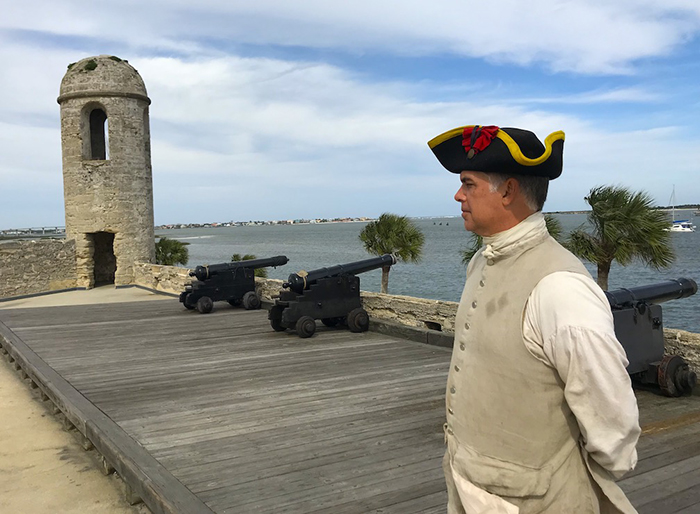
Castillo de San Marcos volunteer Chad Light traces his family roots in St. Augustine to 1593. Image by Tom Adkinson. |
ST. AUGUSTINE, Florida – National Park Service volunteer Chad Light, dressed as a Spanish soldier from the mid-1500s, stands on the gundeck of the Castillo de San Marcos and poses with a young visitor and then offers the youngster’s father a tip: “Give your daughter a print of that photo in about 40 years and tell her to visit us again. Nothing much will have changed.”
That’s true. When 2061 dawns on this this gigantic stone fortress, it will look almost exactly as it does today during the coronavirus pandemic, as it did in 1934 when it became a National Park Service property, as it did in 1821 when the Spanish ceded Florida to the United States, as it did in 1740 when it survived a British siege and as it did in 1695 when initial major construction was finished.
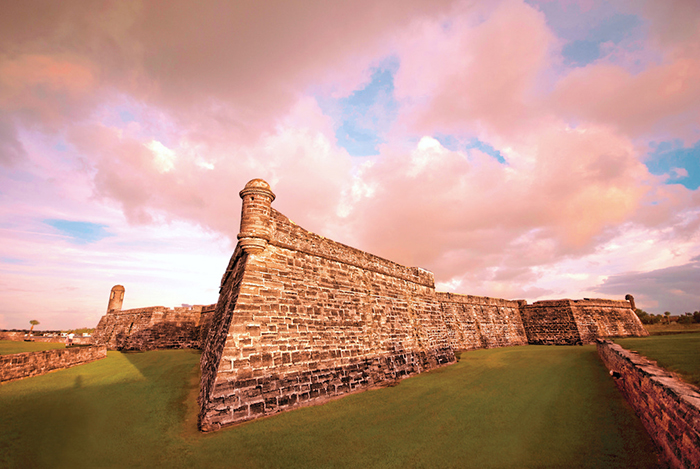
The imposing walls of the Castillo de San Marcos never buckled to colonial-era attacks and are an amazing historical artifact. Image by Florida’s Historic Coast. |
Construction began in 1672, followed by more than two decades of work to build the largest fort in the United States, which also was designed to be a sanctuary to shelter community residents in times of attack.
It’s also the best-preserved example of colonial fortification in the continental U.S. and was the northernmost point in the New World empire Spain conquered and exploited.
The Castillo de San Marcos was the capstone of Spain’s effort to defend this corner of its empire and protect the “treasure fleets” that were taking gold, silver, sugar, tobacco, hardwoods and other riches back across the Atlantic.
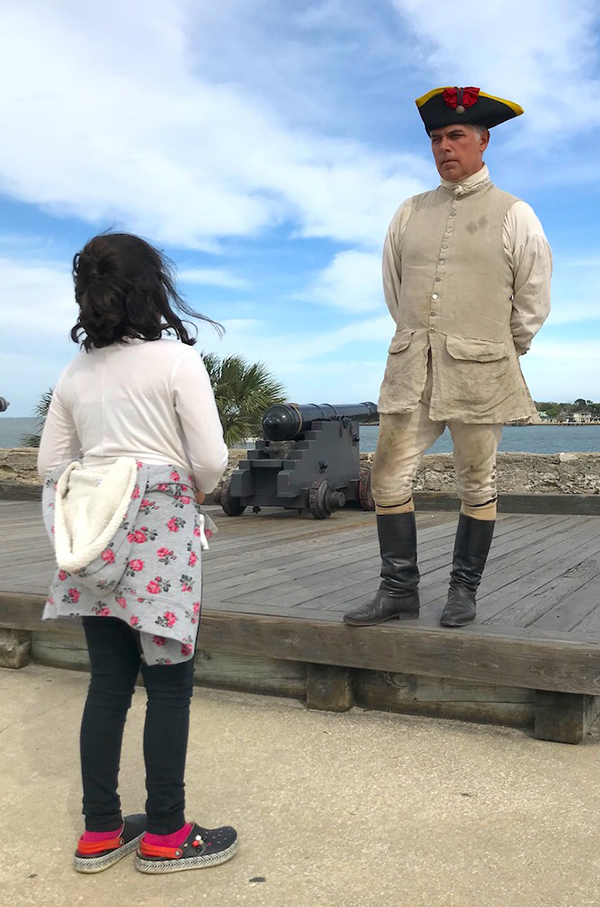
A youngster quizzes National Park Service volunteer Chad Light about life as a Spanish soldier in colonial times. Image by Tom Adkinson. |
It fared better than its predecessors – nine wooden fortifications dating to the establishment of St. Augustine in 1565. The Spanish, the French and the British practically took turns fighting each other in the region, and British pirates even got in on the act, sacking the settlement in 1668.
The star-shaped fortress built of a shell-stone rock called coquina withstood a giant test in 1702, when the British occupied St. Augustine and besieged the fort for 50 days. Fifteen hundred Spanish colonists and soldiers held on inside, and the British left, but not before burning the town.
In non-pandemic times, large crowds of visitors wander the grounds, inspect interior rooms, pose beside cannon that point across Matanzas Bay and engage with park service rangers and historic re-enactors. After months of being closed in 2020, the fort now is allowing up to a hundred visitors at a time to step back in history, but formal programs and demonstrations of historic weapons remain suspended. You’ll have to wait to hear the cannons boom.
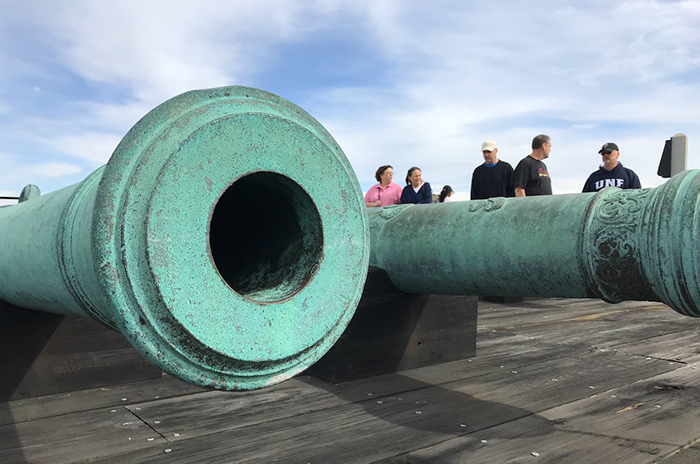
The cannons at Castillo de San Marcos did thunder occasionally in the multi-national history of America’s oldest fort. Image by Tom Adkinson. |
When the crowds do come back, you’ll be able to visit with park service volunteers such as Chad Light and learn how connected he feels to the Castillo de San Marcos. He has traced his mother’s family in St. Augustine to 1593 and his father’s family to 1601. His roots are deep in the sandy Florida soil.
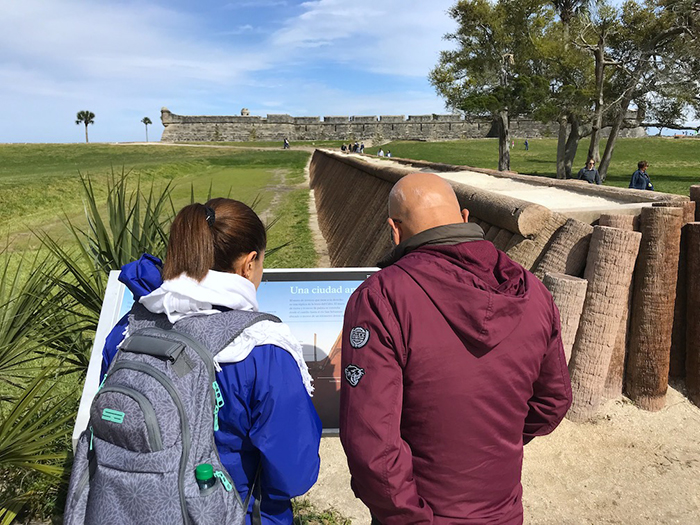
Two visitors study a plaque outside the Castillo de San Marcos before exploring the interior of the sprawling military complex. Image by Tom Adkinson. |
For all the serious history that’s wrapped up in the fort, there’s some humor, too. For instance, golfers used to play a 9-hole course right on the grounds of the fort. The first three holes were built in 1895, making the Castillo de San Marcos the site of the first golf course in the Sunshine State.
|

